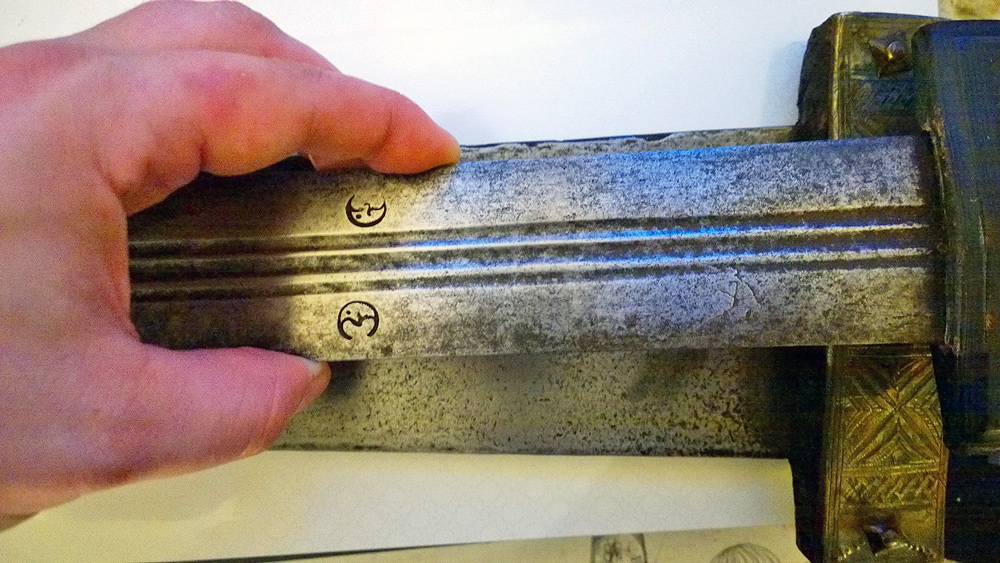
Power & Status - Wide Blades
October 8, 2023 African Arms
A peculiar and very particular style of takouba exists that differs widely from the usual assortment of trade blade and trade blade influenced designs. Rather than a long, parallel edged design with fullers, the wide bladed takouba is, by contrast, flat, triangular and of purely local manufacture. Termed fatefate in Hausa the style seems to occur in areas with Hausa influence including northern Cameroon.
The style also seems to have a certain connection to local courts and highly organized palace political structures. In the last century than can still be seen in traditional courts, particularly in Cameroon.
The three examples show above show the typical characteristics of the type with wide, flat blades. In comparison to a typical takouba the differences in dimensions are dramatic.

Given the abundance of trade blades and the propensity of Sahel smiths to copy European patterns, the wide blade form stands out as a completely local development. The first assumption would be that these were not combat blades, however examples I have come across are sharp, well made and show signs of use. Instead I think it is far more likely the form is linked to the common practice of large metal currency items. Where the size had a direct correlation to wealth and social position. These swords perhaps express a similar role as symbols of the position of the owner.

© Bruno Barbey/Magnum Photos (https://www.magnumphotos.com/image/PAR184121.html)
In the image above a similar wide bladed takouba is circled being carried by a retainer of the emir of Katsina in 1977. It seems probable these swords were handed down as part of the retainer's position.
The fact this style was retained in the face of treasured and high quality European imports points to a deep tradition and importance associated with wide blades. Perhaps this was the typical form of the sword before imported blades became common.
The flat, wide nature may be the result of smiths working with locally refined ore and devising a shape, that due to the large base was less prone to breakage.
The following image shows the width of my largest example relative to a standard triple fuller blade.

The blades are also usually reasonably thick with with decent flexibility.

The also often exhibit an unusual texture, a rough finish, often with pitting.

The size of these weapons likely relates to a display of the commodity they are made from - iron. Iron was a common currency item, sign of wealth and trade item within the Sahel. These swords then are a living record of the importance of iron and its mark on power and status.